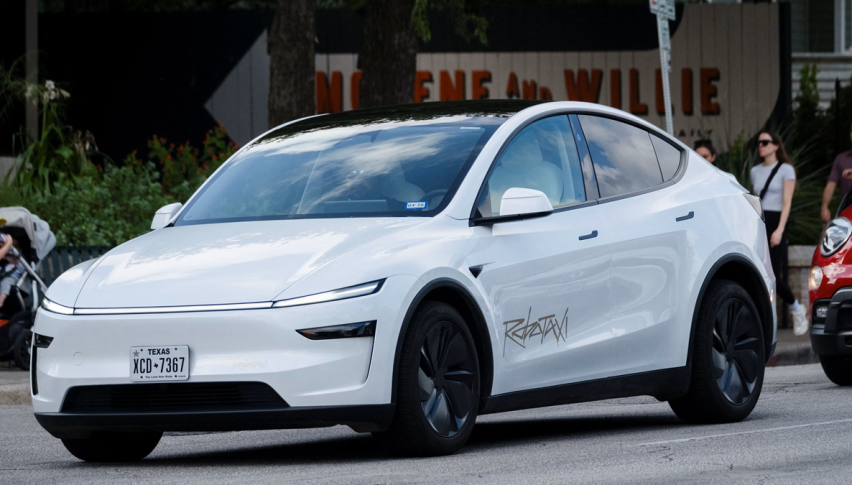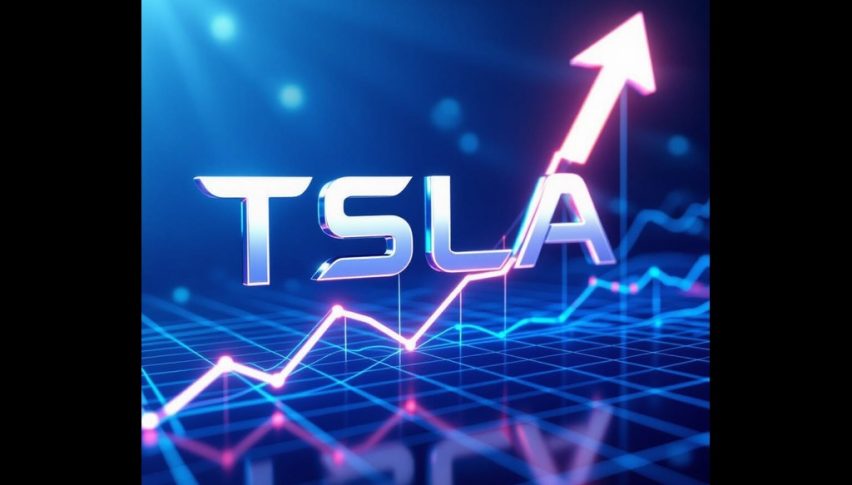TSLA Stock Targets $400 After 10% Surge as Musk’s Tesla Robotaxi Hits Streets
Tesla's long-awaited self-driving robotaxi hit the streets in trial on Sunday, reigniting investor enthusiasm and fueling a strong stock...

Quick overview
- Tesla has begun limited testing of its autonomous robotaxi fleet, marking a significant milestone after over a decade of anticipation.
- The pilot program features 10 to 20 Model Y vehicles operating without driver input, monitored by a safety professional.
- Tesla's aggressive, data-driven approach to autonomous ride-hailing positions it as a direct competitor to Waymo, which has taken a more cautious route.
- Following a turbulent period, Tesla's stock has rebounded significantly, with investors optimistic about the company's future and potential service-based revenue.
Live TSLA Chart
[[TSLA-graph]]Tesla’s long-awaited self-driving robotaxi quietly hit the streets in a controlled trial on Sunday, reigniting investor enthusiasm and fueling a strong stock rebound.
A Milestone Years in the Making
Tesla (NASDAQ: TSLA) made headlines again this week—though not with its usual fanfare. After more than a decade of anticipation, the company quietly began limited testing of its autonomous robotaxi fleet. The first public rides took place on Sunday, with select Tesla investors and social media influencers as passengers.
While the vehicles operated without driver input, a Tesla-employed safety monitor was seated in the front passenger seat, equipped with an emergency kill switch to manually override the system if needed.
CEO Elon Musk, who originally proposed the robotaxi concept over ten years ago, described the company as being “extremely paranoid” about safety ahead of the rollout. Only 10 to 20 Model Y vehicles branded with “robotaxi” decals are currently participating in the pilot program.
Facing Off with Waymo
Tesla’s entry into the autonomous ride-hailing space positions it as a direct challenger to Alphabet-backed Waymo, which has already deployed its fleet in multiple U.S. cities. While Waymo has slowly expanded its fully driverless operations, Tesla’s strategy appears more data-driven and aggressive, leveraging its widespread hardware already embedded in millions of vehicles globally.
The contrast between the two companies’ approaches—Waymo’s slow and regulated vs. Tesla’s beta-style real-world testing—could determine the speed and scale of robotaxi adoption in the coming years.
Market Reacts Favorably Despite Political Tensions
Tesla’s stock has been on a wild ride. After dipping to nearly $220 in early April, TSLA has staged an extraordinary rally, climbing over 60% in two months to reach a recent high of $335.50. The rally has been underpinned by renewed optimism in global trade, signs of a recovery in the EV market, and growing excitement about autonomous technologies.
However, the rebound wasn’t without turbulence. Earlier in June, Tesla suffered a sharp 20% drop after a public spat between Elon Musk and U.S. President Donald Trump, which centered around disputes in the administration’s tax and budget bill. Though details of the disagreement were scant, the political friction rattled markets and triggered one of Tesla’s steepest weekly declines this year.
Technical Outlook: $400 in Sight?
Since that episode, the dust has settled. TSLA has clawed back losses, surging nearly 24% since June 5. Importantly, the share price has now broken above the 20-day simple moving average (gray line), a technical level that had previously capped gains. With momentum building, Tesla bulls are eyeing the next psychological milestone at $400.
While the robotaxi debut was subdued, the strategic implications are massive—signaling Tesla’s readiness to pivot toward service-based revenue and AI-powered vehicle monetization.
- Check out our free forex signals
- Follow the top economic events on FX Leaders economic calendar
- Trade better, discover more Forex Trading Strategies
- Open a FREE Trading Account



